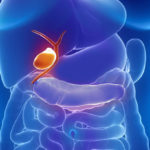
About Facial Tics Treatment
Facial Tics Treatment
A facial tic is an involuntary, uncontrolled spasm in the facial muscles. The tic is unwanted and generally occurs regularly enough to be a nuisance to the person who experiences it.
A person can hold in a tic temporarily, in a similar way to holding in a sneeze, but doing so often makes the person increasingly uncomfortable. A few different disorders can cause facial tics, but most of the time facial tics do not indicate a severe medical condition.
According to a report in Pediatric Neurology, facial tics occur more commonly in children than adults, and boys seem to be much more likely to experience facial tics than girls. Most children’s facial tics fade after a few months.
What are facial tics?
Facial tics are uncontrollable spasms in the face, such as rapid eye blinking or nose scrunching. They may also be called mimic spasms. Although facial tics are usually involuntary, they may be suppressed temporarily.
A number of different disorders can cause facial tics. They occur most often in children, but they can affect adults as well. Tics are much more common in boys than in girls.
- Facial tics usually don’t indicate a serious medical condition, and most children outgrow them within a few months.
- Woman with facial tics covering her face with her hands.
- It is possible to temporarily suppress a facial tic.
Facial tics are involuntary muscle movements that can happen anywhere in the face. However, they usually occur in the same place each time and happen frequently enough to bother the person. Severe tics can affect a person’s quality of life.
Common types of facial tics include:
- rapid eye blinking or winking
- squinting
- flaring the nostrils
- clicking the tongue
- sucking the teeth
- raising the eyebrows
- opening and closing the mouth
- scrunching the nose
- mouth twitching
As well as these muscular tics, some people may also experience vocal tics, such as clearing the throat or grunting.
A person may suppress a tic temporarily, but it will come out eventually.
Types of tics disorders
Transient tics are temporary. Transient tic disorder may cause a regular facial or vocal tic, but the tic typically lasts for under a year. Transient tic disorder usually only causes tics while a person is awake. People rarely have tics while they are sleeping.
ransient tic disorder is responsible for the majority of causes of tics in children. They usually resolve without any treatment.
Chronic motor tic disorder
Chronic motor tic disorder is a more persistent tic disorder. For a doctor to diagnose a person with chronic motor tic disorder, they must have experienced tics for over a year, for periods of at least 3 months at a time.
Unlike transient tic disorder, chronic motor tic disorder causes tics that can also occur during sleep. Chronic motor tic disorder can occur in both children and adults. Young children who have chronic motor tic disorder may not need treatment, as symptoms may be more manageable or subside on their own over time.
Adults who have the disorder may need medication or other treatment to control the tics.
Tourette’s syndrome
Tourette’s syndrome, often shortened to Tourette’s, is a chronic condition that causes one or more motor or vocal tics.
Most people who have Tourette’s syndrome develop it during childhood, but the disorder can continue into adulthood. Tics usually become less severe as the person ages. People with Tourette’s syndrome have both motor and verbal tics. They may make sounds or say words involuntarily.
Some people with Tourette’s syndrome have only small motor tics, such as rapid blinking or throat clearing. However, they may also have more involved motor tics, such as:
- shrugging one or both shoulders
- shaking the head uncontrollably
- flapping the arms
- saying inappropriate words
- making inappropriate gestures
- yelling out
Treatment
Treatment for facial tics can vary depending on the type and severity of the tic. Many tics, such as those caused by transient tic disorder, may go away without treatment over time.
Tics that interfere with performance in school or at work may require treatment. Long-lasting, chronic tics, such as those caused by Tourette’s syndrome, may need more extensive treatment.
Medication
Medication for tics include classes of drugs called alpha-adrenergic agonists, neuroleptic drugs, and dopamine blockers. In cases of persistent facial twitches or tics, doctors may recommend Botox injections. Botox injections can paralyze the facial muscles for a few months, which may be enough to stop a tic from coming back.
Medications can also help treat any underlying conditions causing the tic, such as Tourette’s syndrome or ADHD.
Psychotherapy
Doctors may recommend a person has regular sessions with a psychotherapist who can help the person find ways to change or eliminate the tics.
Behavioral modification and habit reversal techniques may help some people get over their tics and improve their quality of life. The process typically involves teaching the person to identify when the tic is about to happen. Once a person can do this, the therapist will then encourage them to try to replace the tic with a different behavior.
Over time, this may help replace the physical habit with one that is less distracting or does not affect a person’s daily functioning.
Surgery
Some surgical methods may help in severe cases of facial tics, such as those caused by Tourette’s syndrome.
One surgical therapy is called deep brain stimulation. Some scientists believe that by implanting electrodes in the brain, electrical currents can reach specific sections of the brain, which may help regulate brain waves and reduce tics.
A recent study found that deep brain stimulation may help relieve symptoms of Tourette’s syndrome, but more research is still required to pinpoint the best areas of the brain to stimulate.
Natural remedies
- Person sitting cross-legged and meditating.
- Meditation and light exercise may treat tics.
Doctors may also recommend natural treatments for facial tics. Stress is believed to play a role in the Stress-relieving activities include:
- light exercises
- imaginative play
- yoga
- meditation
Getting a full night’s rest is also crucial for people looking to reduce stress and find relief. Sometimes, a doctor may recommend counseling.
How is a facial tic disorder diagnosed?
Your doctor can usually diagnose a facial tic disorder by discussing the symptoms with you. They may also refer you to a mental health professional who can assess your psychological status.
It’s important to rule out physical causes of facial tics. Your doctor may ask about other symptoms to decide whether you need further testing. They may order an electoencephalogram (EEG) to measure the electrical activity in your brain. This test can help determine whether a seizure disorder is causing your symptoms.
Your doctor might also want to perform an electromyography (EMG), a test that evaluates muscle or nerve problems. This is to check for conditions that cause muscle twitching.
How is a facial tic disorder treated?
Most facial tic disorders don’t require treatment. If your child develops facial tics, avoid drawing attention to them or scolding them for making involuntary movements or sounds. Help your child understand what tics are so they can explain them to their friends and classmates.
Treatment may be needed if the tics interfere with social interactions, schoolwork, or job performance. Treatment options can include:
- stress reduction programs
- psychotherapy
- behavioral therapy
- dopamine blocker medications
- medications to treat underlying conditions, such as ADHD and OCD
- botulinum toxin (Botox) injections to temporarily paralyze facial muscles
Recent studies have shown that deep brain stimulation may help treat Tourette’s syndrome. Deep brain stimulation is a surgical procedure that places electrodes in the brain. The electrodes send electrical impulses through the brain to restore the brain circuitry to more normal patterns.
This type of treatment can help relieve symptoms of Tourette’s syndrome. However, more research is needed to determine the best area of the brain to stimulate for improvement of Tourette’s syndrome symptoms.






